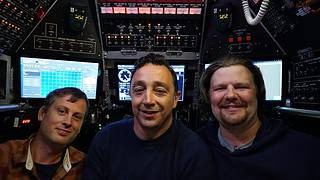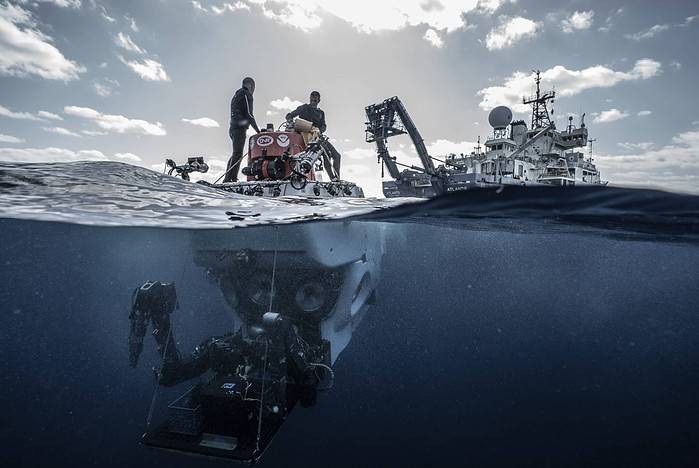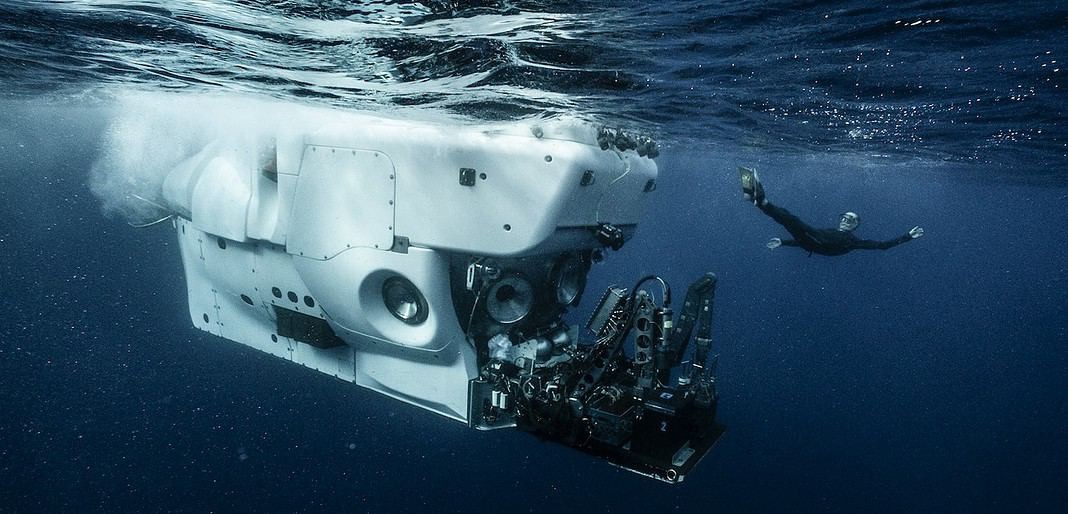The 58-year-old, human-occupied submersible Alvin made history recently when it successfully reached a depth of 6,453 meters (nearly 4 miles) in the Puerto Rico Trench, north of San Juan, Puerto Rico, the deepest dive ever for the storied underwater vehicle.
The dive was a critical step in the process of achieving certification from the US Navy to resume operations after an 18-month overhaul and upgrade that extended the sub’s maximum dive rating from 4,500 meters (14,800 feet) to its new limit of 6,500 meters (21,325 feet).
US Naval Sea Systems Command (NAVSEA) requirements stipulate the certification dive be between 6,200-6,500 meters (20,341-21,325 feet).
The three-person crew aboard Alvin for this dive included pilot Anthony Tarantino from the Woods Hole Oceanographic Institution; WHOI marine engineer Fran Elder; and Mike Yankaskas from NAVSEA.
The added range puts roughly 99% of the seafloor within reach of the world’s longest-operating human-occupied submersible program in the world.

This success comes after test dives were temporarily halted in November 2021 when a post-dive visual inspection revealed damage to several attachment points of the specialized syntactic foam used to provide buoyancy to the 43,000-pound/19,504kg submersible. The Alvin team has spent the past several months working to ready the sub to dive again, setting sea in early July for a new round of tests.
WHOI President and Director Peter de Menocal said:
“Investments in unique tools like Alvin accelerate scientific discovery at the frontier of knowledge. Alvin’s new ability to dive deeper than ever before will help us learn even more about the planet and bring us greater appreciation for what the ocean does for all of us every day.”
This latest dive means the sub has completed 5,086 successful dives, more than all other submersible programs worldwide combined. It’s named after the WHOI physicist and oceanographer Allyn Vine, who first championed the idea of building a human-occupied submersible to support deep-sea research, was originally constructed by WHOI engineers in 1964, and has been operated by the Institution ever since. On average, it conducts about 100 dives per year on missions to study the processes that create and shape Earth’s crust, the chemical conditions that support life in extreme environments, and the vast diversity of life in the deep sea.
In 1974, Alvin played a central role in Project FAMOUS (French American Mid-Ocean Undersea Study) to verify aspects of the then-new theory of plate tectonics. Three years later, scientists diving in Alvin rewrote modern understanding of life on Earth when they discovered hot, chemical-rich water flowing from the seafloor and supporting entire ecosystems independent of sunlight at the surface. In 1986, Alvin made one of its most iconic expeditions when WHOI scientist Robert Ballard used it to explore the wreck of HMS Titanic. It also helped find a lost nuclear bomb off the coast of Spain.


